If you’re new to developing film at home, it’s hard to find information about which chemicals can be reused, and which ones need to be disposed of after the first use.
Most film developing chemicals can be reused, although they need to be stored properly to avoid them spoiling when in touch with oxygen. As a general rule, the chemicals that affect the quality of your images should only be used once, while the others that perform simple tasks, like the stop bath and fixer, can be reused.
In this article, I’ll go over all of the film developing chemicals, and let you know which ones are safe to be reused, as well as any special storage requirements for keeping them effective long term.
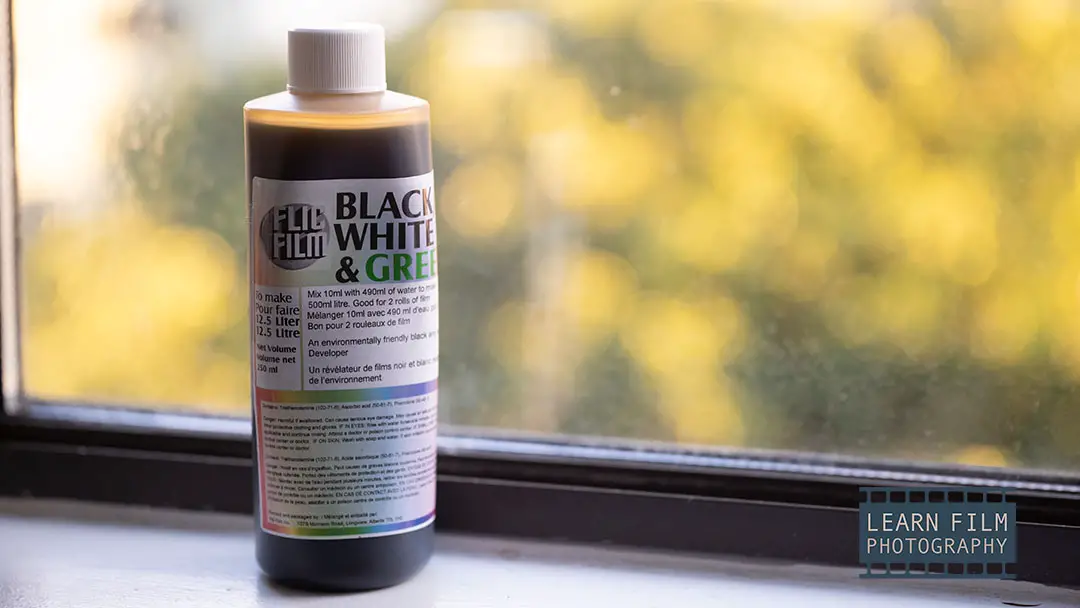
1. Black and White Film Developer: Not resuable
Black and White film developers are rarely if ever, used more than once. Because the film developer directly affects the image quality of the developed negatives, even the most economically-oriented film photographers are unlikely to reuse this product.
That said, it is technically possible to reuse the film developer for multiple rolls, and it’s something I’ve done in the past. Simply add 20% to the developing time, and by all means, you’ll still come back with a second set of negatives. Albeit slightly (and maybe unnoticeably) less dense than the first set.
Make sure that if you do reuse developer, that it’s done in one session. Once the developer is diluted into a working solution, it will have 24 hours before it becomes unusable.
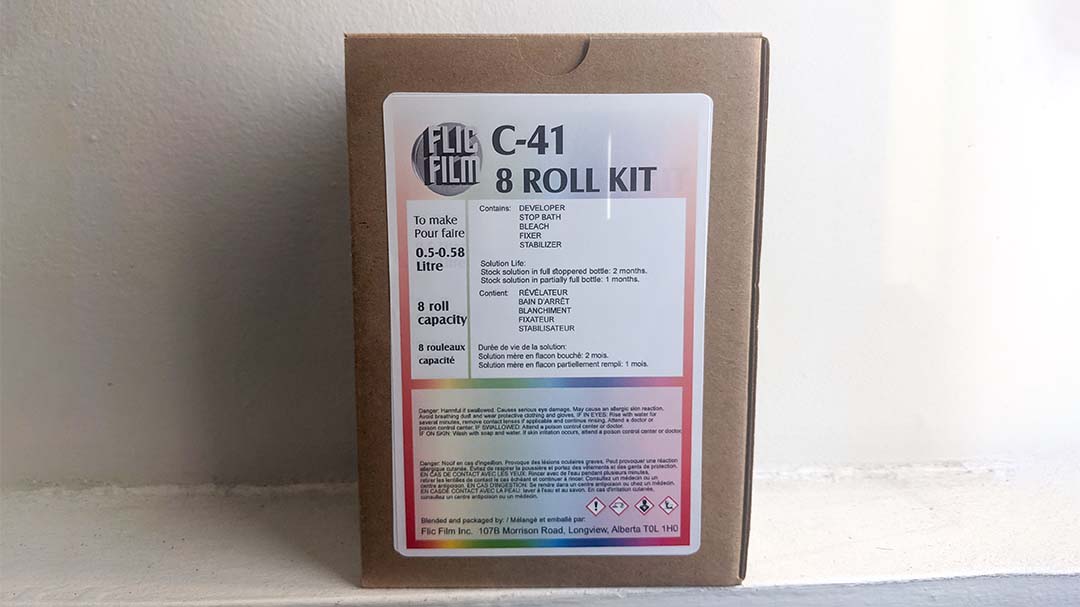
2. Color Film Developer: Reusable (though photo labs usually don’t)
Color film developer, like black and white, directly affects the quality of the images, so it is rarely reused in professional settings. Most good labs opt to replenish the color film developer each time to give their clients the best results.
However, at home, it’s difficult (and expensive) to create the proper setup where replenishment makes sense. Most color developing kits come with multiple packets that need to be mixed to create the developer solution, making it very difficult to use the developer one-shot like you can with black and white.
Color developer in its mixed state will last up to one month when stored in a well-sealed container without any air on top. I use 1L (32oz) growler bottles from the brewery with great success, though you can purchase these on Amazon here for cheaper. Do not use the fancy bottles with the flip tops — they rarely seal properly, and you will find that your chems go off.
Every C41 Color Developing kit is a little different in terms of its reuse capacity. Most can process up to 8 rolls of film before the quality of the negatives begins to degrade. However, each person has a different tolerance to weakening developers, and some get as many as 16, or even 20 sets of negatives out of a single 8-film kit.
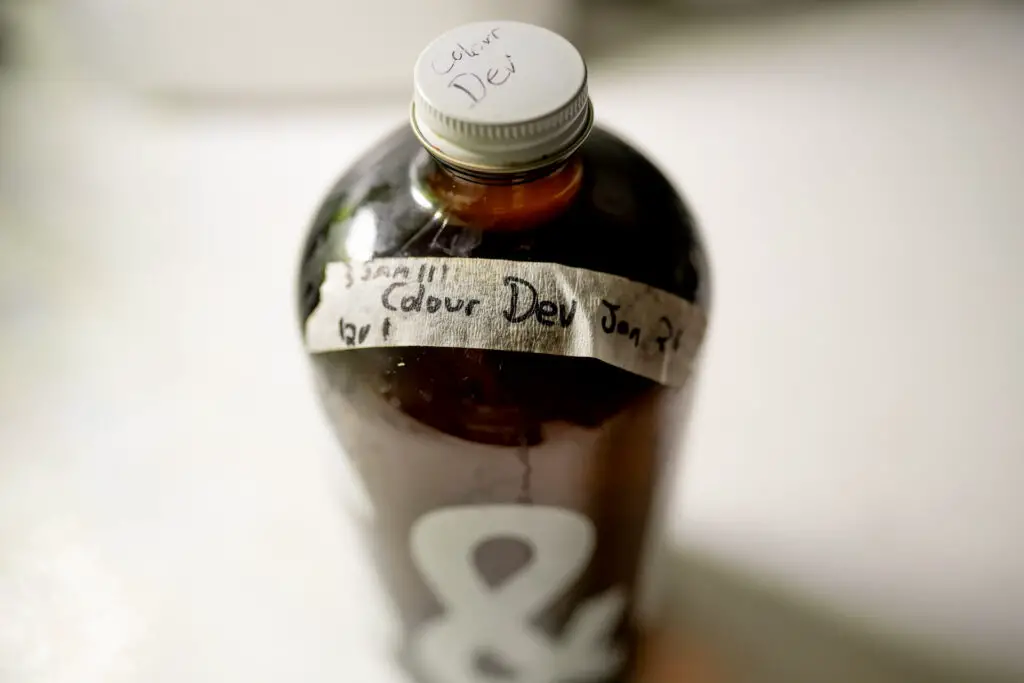
3. Indicator Stop Bath: Reusable
Stop baths for film are mostly made from acetic acid, which is just vinegar in a stronger concentrate. The acidity stops development immediately and helps get the film down the right pH for the fixer to function.
So the stop bath can be used as long as it is still acidic, which can be a really long time. For example, I went for an entire year with a single dilution of Ilford’s Indicator Stop Bath stored in a 1L brewery growler bottle and had zero problems.
Then again, do you even need to use a stop bath when developing film?
How do you know when film stop bath stops working?
There are two ways to know that it’s time to mix up a new bottle of stop bath.
The first way is if there are some floaters in the bottle. These are likely some kind of yeast or bacteria growing in the solution and is something that’s more likely to happen with citric acid-based stop baths, which are marketed as having no smell, but I can attest that it also happens with regular stop baths. So just shine a light through your stop bath once every six months or so and you’ll be fine.
The second way to tell if your stop bath isn’t working is if the solution turns a deep red or purple color. Most stop baths are called “indicator stop bath,” which is a fancy way of saying they have phenolphthalein in them.
Phenolphthalein is a popular indicator because it stays clear until the very instant it reaches pH 8.5, and the change is so dramatic that you can easily see it happening under a red safelight in the darkroom.
However, the only time I’ve seen that happen is when I’ve poured the stop bath into the developer when disposing of it. You’d have to make a lot of prints or develop a year’s worth of film to see that change naturally.
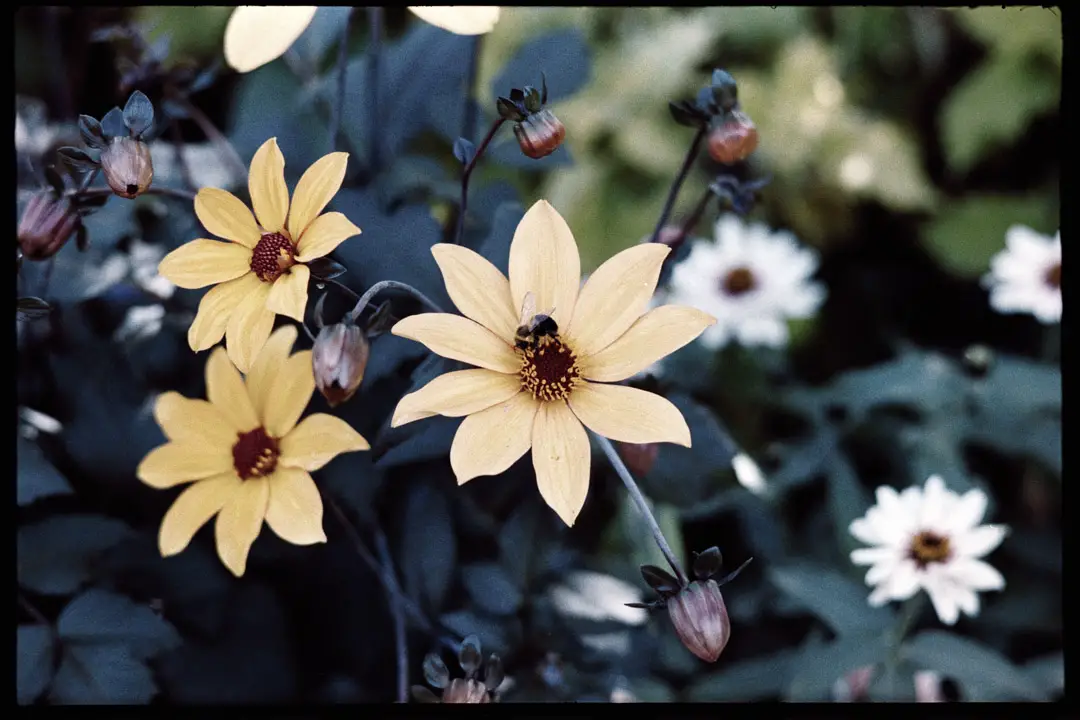
4. Photographic Bleach: Reusable
Bleach, just like blix, stop bath, and fixer is a reusable chemical. The bleach does not affect the image quality — unless it stops working properly. If that happens, you will notice some dark brown color from the retained silver in the emulsion, and the yellow-filter layer will still be on the film.
Bleach should also be stored in an air-tight container filled to the brim with the solution. If there’s any air in the bottle, it can slowly react and cause the bleach to go off.
Photographic bleach simply removes the developed silver from color film so that the silver doesn’t block light from passing through the color dyes. Many photographers love keeping the silver in the film for the archival properties, or for the look it creates.
Skipping the bleach and keeping the silver in color film is called a bleach bypass. The effect of which dulls the colors and adds contrast to the image.
How to dispose of photographic bleach
Do not dump photographic bleach down the sink. The bleach contains silver, which is toxic to aquatic environments downstream and cannot easily be removed through water processing plants. It is also not recommended for those who own septic systems.
The best way to dispose of used photographic bleach is to bottle it and give it to a waste disposal company or call your photo lab to see if they’re able to take it for you. If that’s not possible, then dry the solution in cat litter or dicalite powder (diatomaceous earth), and dispose of it with the regular solid waste.

4. Photographic Fixer: Reusable
Fixer is another one to add to this reusable list. With good storage, photographic fixer can be used for up to 20 rolls of film (or 20 sheets of large format), making it exceptionally economical in the long run.
But proper storage is necessary. Since ammonium thiosulfate is a reducing agent, it will react with oxygen in the air and slowly lose its strength. Mix the fixer with distilled water, and store it up to the brim of an air-tight glass bottle to keep it lasting as long as possible.
I also remove the un-mixed fixer from its original bottle and place it into well-sealed PET stop-loss bags (like these unbranded ones on Amazon), which can squish out all of the oxygen for safe, long-term storage.
To test if your fixer is still viable, cut the leader off of a roll of 35mm film and dunk it in a vial of fixer solution. If it turns clear within 4 minutes, then it’s safe to use. Longer than 5 minutes, and it’s time to mix a fresh batch.
The fixer removes the undeveloped silver from the film so that it is no longer sensitive to light. If the fixer isn’t working well, the film will eventually darken over time as the remaining silver tarnishes. Learn more about film photography fixer, including how to choose the right type for your needs in this article.
How should I dispose of fixer?
Fixer should not be poured down the drain. After use, the fixer contains silver, which is harmful to aquatic ecosystems, including
The best way to dispose of used film fixer is to bottle it and give it to a waste disposal company or call your photo lab to see if they will be able to remove the silver and dispose of it responsibly. If that’s not possible, then dry the solution in cat litter or dicalite powder (diatomaceous earth), and dispose of it with the regular solid waste.

5. Blix: Reusable
Blix is the mix of bleach and fixer that often comes in a C41 color developing kit. This chemical does not directly affect the image quality — unless it stops working properly.
Blix simplifies the developing process into just three solutions — dev, blix, stabilize, and done. By using blix, home developers can save time and get results that are just as good as using separate solutions.
The downside of blix is that it doesn’t last as long as separate bleach and fix because it is more sensitive to changes in pH. You also can’t use blix to do a bleach bypass, unless you skip the blix and use a standard black and white fixer instead.
Make sure to always wash the film between the developer and the blix to make sure the pH stays the same. The wash step between developer and blix isn’t in the most popular color developing kits like the ones by Tetenal, Arista, or Cinestill, but it really should be — especially if you’re going to extend the life of your film developer.
How should I dispose of blix?
Blix is a combination of bleach and fixer in a single solution, meaning it contains the excess silver from both processes. Since silver is a contaminant that is harmful to aquatic ecosystems, it should not be flushed down the drain.
Diispose of used blix by bottling it up and taking it to a waste disposal company or call your photo lab to see if they will be able to remove the silver from the blix and dispose of it responsibly. If you’re unable to take it to a proper waste-disposal facility, then dry the blix in cat litter or dicalite powder (diatomaceous earth), and dispose of it with the regular solid waste.
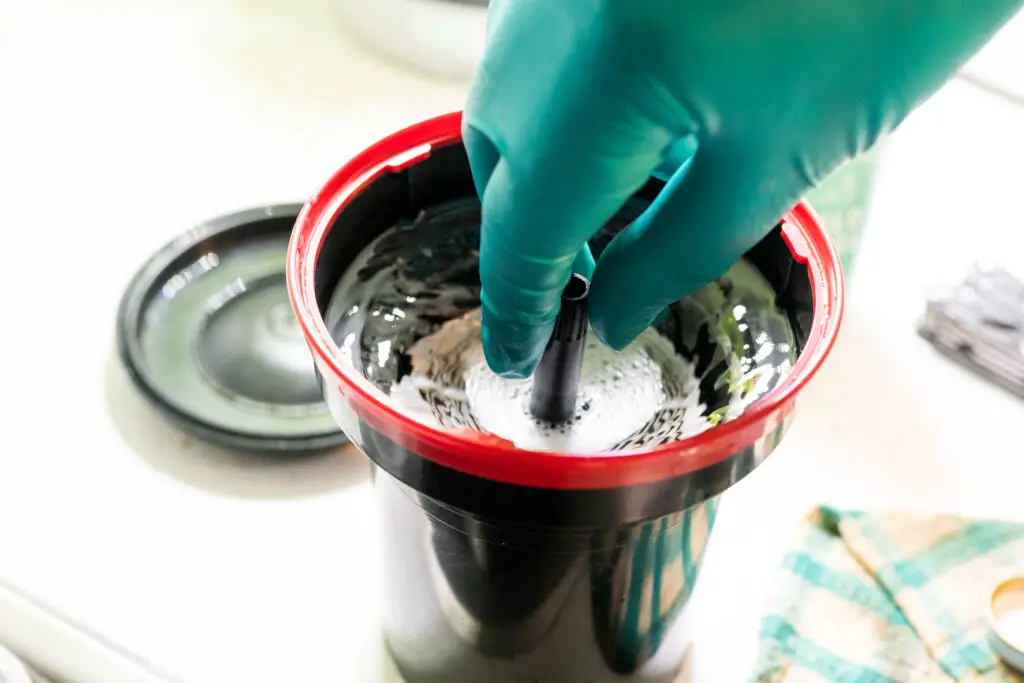
7. Wetting Agent: Reusable, though not technically
Wetting agents like Ilfotol or Photo-Flo aren’t typically reused by most photographers. But that’s not because they can’t be. Most photographers don’t store these chemicals because they are inexpensive and harmless.
Wetting agents are essentially just a soap designed to help water evaporate off the film when it’s drying. So there isn’t that much of a problem with dumping them down the drain — especially after the film has been washed.
But wetting agents, because of their simple formulation, can be reused extensively. I bottled up a 1L solution and used it for more than six months without any issues whatsoever. It can probably go even longer than that, but then I risk having to pass down this bottle to the next generation.
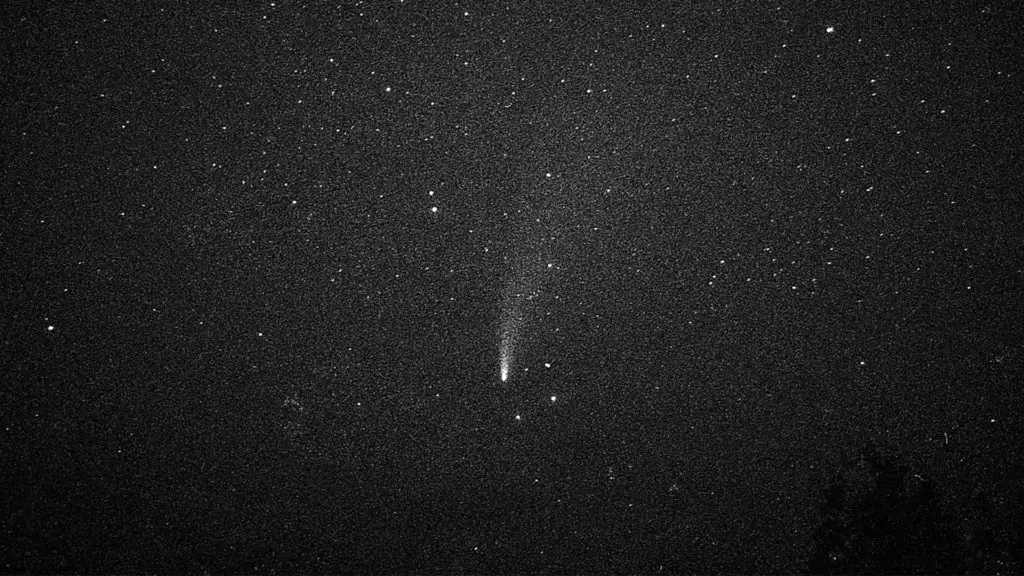
Final thoughts
With proper storage, nearly every film developing chemical can be reused, and maximizing their useful life is the first step in making film photography more environmentally friendly. So far, I’ve had very good luck using the growler bottles from breweries.
If you read through this entire article, I mentioned them in almost every section. And that’s because I love supporting local businesses, and I’m going to be having a beer while developing film anyways, so might as well get two birds with one stone. Just don’t use the bottles for beer again afterward.
Are there any chemicals that I missed? Or do you have any other questions about film developing chemicals? Let me know down in the comment section below! I always take the time to respond to nearly every comment on this blog, and I thoroughly enjoy helping out the community.
You can also find me on Instagram, or in the Official Learn Film Photography Facebook group!

By Daren
Daren is a journalist and wedding photographer based in Vancouver, B.C. He’s been taking personal and professional photos on film since 2017 and began developing and printing his own photos after wanting more control than what local labs could offer. Discover his newest publications at Soft Grain Books, or check out the print shop.

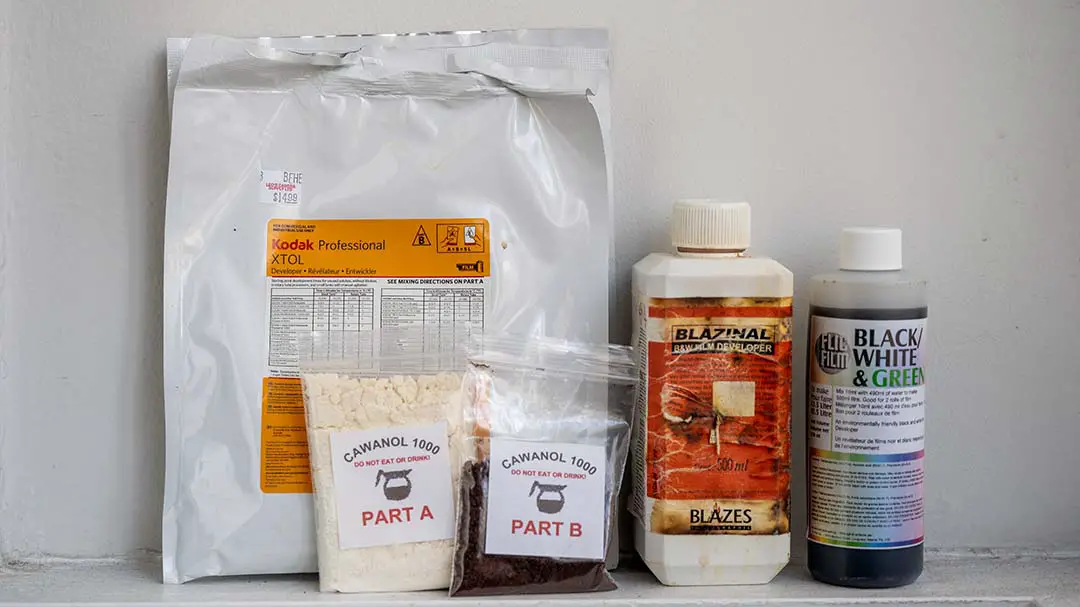

Super useful. Thank you